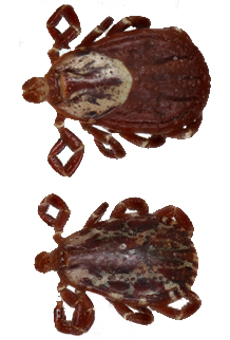Materials for Submission of Samples Include:
Small insects can be collected using a cotton swab or a camel's hair brush dipped in alcohol. It is a good idea to record any information about the insect when it is collected and include this on the Insect Identification Order Form. If the specimen is badly damaged, please try to find an intact specimen to send. If you have more than one specimen of the same kind, send them all in the same vial.
After you have collected the insects, they must be killed quickly to avoid damage. Most insects can be killed by placing them in a vial containing antibacterial gel hand sanitizer. Common rubbing alcohol (70% alcohol) may also be used, but it is more likely to leak during shipping. Both soft and hard-bodied insects should be preserved in antibacterial gel or alcohol since increased temperatures and travel can cause them to become unidentifiable.
However, if the insect has delicate wings, such as a mosquito, moth or butterfly, please kill it by freezing. The insect(s) should be placed in a container and remain in the freezer for at least 2 hours.
If you are using hand sanitizer gel or alcohol to preserve insects, please make sure your sample is in a sealed vial or container so that it does not leak. If you are not using any gel or alcohol, you may send insects in any container, such as a pill bottle, as long as it will prevent crushing.
Please do not apply any kind of tape or glue directly on the insect or crush it in any way.
Materials for Submission of Samples Include: An Tick Identification Form (submitted online or by mail), a padded envelope or box for mailing, a vial, and a ziploc bag.
Please refer to the following website for tick removal information or Click here
Tick Removal
Ticks WILL NOT be tested if placed in alcohol or on tape.
Place tick in a ziplock bag, then into a padded envelope or crushproof container.
Entomogen Inc. 140 Welland Avenue, Unit 9 St. Catharines, ON L2R 2N6
Submit Tick for Testing